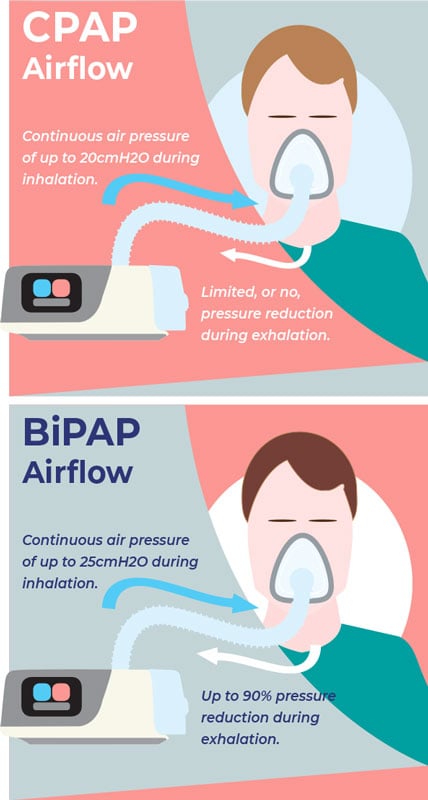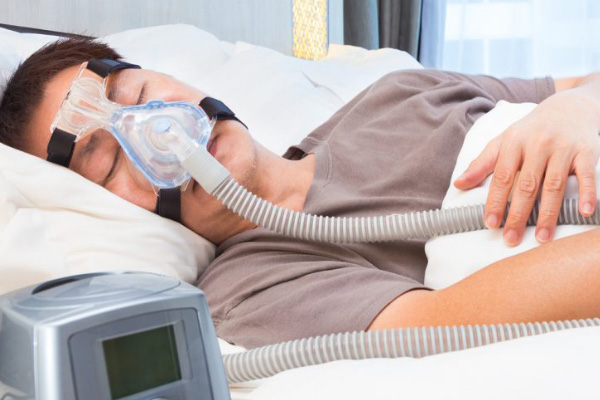Benefits of Opting for BiPAP Rental for Home Therapy
Benefits of Opting for BiPAP Rental for Home Therapy
Blog Article
Bipap vs. CPAP: Which Is the Finest for Your Sleep Disorder?
When navigating the complexities of rest problems, the selection in between BiPAP and CPAP therapy is a vital factor to consider. While CPAP gives a constant air movement suitable for obstructive rest apnea, BiPAP's double stress settings may boost convenience for those with even more elaborate respiratory issues.
Understanding Rest Disorders
Rest conditions encompass a series of conditions that interfere with typical rest patterns, affecting both the top quality and duration of remainder. These conditions can materialize in numerous types, including sleeping disorders, rest apnea, narcolepsy, agitated leg disorder, and parasomnias. Each problem presents special challenges, frequently resulting in substantial daytime exhaustion, cognitive disability, and psychological disruptions.
Sleep problems is characterized by problem falling or remaining asleep, while sleep apnea involves repeated interruptions in breathing throughout sleep, often causing fragmented remainder. Narcolepsy, on the various other hand, is marked by extreme daytime sleepiness and unexpected rest attacks. Uneasy leg disorder triggers awkward experiences in the legs, prompting an unmanageable desire to relocate them, which can also impede the capability to go to sleep.
The influence of sleep disorders prolongs beyond private health and wellness, influencing total productivity, partnerships, and lifestyle. Understanding the details nature of each disorder is crucial for reliable medical diagnosis and treatment. As sleep health ends up being progressively recognized as an important component of general wellness, dealing with these disorders is essential for enhancing both sleep quality and everyday functioning.
Exactly How CPAP Works
Constant Favorable Respiratory Tract Pressure (CPAP) therapy is often employed as a primary treatment for obstructive sleep apnea (OSA) The device of CPAP includes making use of a machine that provides a consistent stream of air with a mask worn during sleep. This air flow preserves positive stress in the respiratory tract, preventing the collapse or obstruction of the throat that can take place during rest.
When a person inhales, the CPAP equipment gives a constant flow of air, making sure that the respiratory tract continues to be open - BiPAP Rental. This not just minimizes the signs of OSA, such as snoring and interfered with sleep patterns, yet also minimizes the connected health dangers, including cardio complications and daytime exhaustion
The stress setups on a CPAP equipment can be customized to satisfy private person needs, frequently established via a rest study. In general, CPAP therapy has actually been revealed to dramatically improve the quality of sleep and total health for people suffering from obstructive sleep apnea.
How BiPAP Functions
BiPAP, or Bilevel Favorable Respiratory Tract Stress, is a customized kind of non-invasive air flow that is specifically useful for individuals with problems such as complicated sleep apnea or breathing conditions. Unlike CPAP, which provides a constant stream of air at a single pressure, BiPAP offers two distinct stress setups: a greater inspiratory stress for breathing and a you can try these out lower expiratory stress for exhalation. This dual-pressure approach allows for much easier breathing, lowering the initiative required during exhalation.
The gadget operates via a mask fitted over the nose or mouth, connected to a device that creates atmospheric pressure. When the person breathes in, the machine supplies the greater pressure to assist with airflow, guaranteeing that the airway remains open. Upon exhalation, the equipment automatically lowers the stress, making it much more comfortable for the person to take a breath out.

Secret Distinctions In Between BiPAP and CPAP

In contrast, BiPAP (Bilevel Favorable Air passage Pressure) offers two various stress settings: one for breathing and a reduced one for exhalation. This dual stress system enables even more comfy breathing, specifically for people who battle with exhaling against a continuous stress. BiPAP is typically advised for patients with complex sleep apnea, persistent obstructive lung condition (COPD), or those that require additional support during sleep.
In addition, the intricacy of BiPAP tools generally leads to a higher expense and needs a lot more mindful titration than CPAP. BiPAP Rental. Understanding these key differences can aid in recognizing which device may be a lot more appropriate for certain sleep conditions, establishing the groundwork for informed treatment decisions
Choosing the Right Treatment
Just how can one determine one of the most ideal treatment for taking care of rest disorders? The decision in between BiPAP and CPAP therapy mainly depends upon the specific characteristics of the rest problem, the individual's general health and wellness, and their comfort with the device. CPAP, which supplies a continual stream of air, is frequently recommended for obstructive sleep apnea (OSA) It keeps an open airway during sleep, efficiently protecting against apneas and hypopneas.
Alternatively, BiPAP provides two degrees of pressure: one for breathing and a reduced one for exhalation. This double pressure system is beneficial for people with complicated rest apnea or those who experience difficulty breathing out versus a constant pressure. Furthermore, BiPAP is frequently advised for individuals with respiratory system conditions, such as chronic obstructive lung disease (COPD), where differing pressure setups can enhance convenience and compliance.
Ultimately, a comprehensive analysis by a sleep specialist, consisting of a sleep research, can aid figure out which therapy lines up best with the client's needs. Factors such as comfort, convenience of usage, and details clinical problems should additionally be official source considered to enhance therapy results.
Verdict
In summary, both BiPAP and CPAP serve unique objectives in the management of sleep disorders. CPAP is efficient for obstructive sleep apnea with regular air movement, while BiPAP offers dual pressure settings that enhance convenience for those with complex rest apnea or respiratory system problems. The option between these therapies ought to be directed by private requirements and conditions, requiring a detailed analysis by a rest expert to make sure ideal treatment outcomes and improved quality of sleep.

In general, CPAP treatment has actually been shown to dramatically improve the high quality of rest and overall health for people enduring from obstructive sleep apnea.
BiPAP is commonly recommended for clients with complicated rest apnea, chronic obstructive lung condition (COPD), or those that require additional assistance throughout sleep.
CPAP is effective for obstructive sleep apnea with consistent air flow, while BiPAP provides double stress setups that improve convenience for those with complicated sleep apnea or respiratory system problems.
Report this page